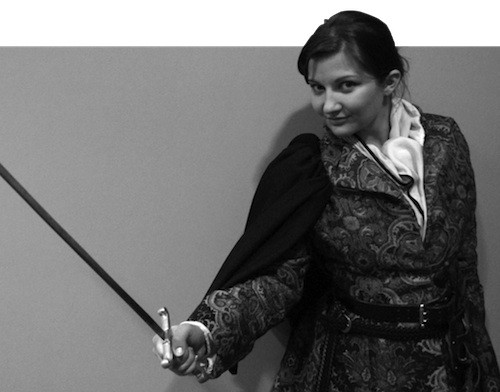There’s something to be said about trying new things. In the Jacobean comedic play The Roaring Girl (Feb 20-24, Neptune Studio Theatre), the titular “girl” in question is Moll Cutpurse, who is roped into a scheme to play Cupid, a role that goes against her brash, hard-nosed nature. Like Cutpurse, Vile Passéist Theatre is trying something new with their adaptation of Thomas Middleton and Thomas Dekker’s The Roaring Girl.
”We decided to turn this play into a musical because the joyful, bustling feel of early-modern London lends itself so well to the musical format. Vile Passéist Theatre has never done a musical before, and we were looking for new challenge—we also felt that it would be an exciting way to expose a new audience to early modern theatre,” says director Dan Bray. “The Roaring Girl is, at its essence, a dynamic story, and transforming it into a musical also allows us to focus on and enhance the lyricism and playfulness of the original text.”
Set to an original score by Jenny Trites, the cast, featuring Kristi Anderson, Francesca Barnett-Cowan, Clara Bullock, Mike Chandler, Pasha Ebrahimi and more, sing their way through the subversive work, which bucked the trend of a headstrong woman trading in her “difficult” ways for the love of a man (coughThe Taming of the Shrewcough)
“Moll Cutpurse is definitely one of a kind. While Shakespeare, for example, has his share of cross-dressing heroines, they generally pine over a man they are unable to woo because of their disguise. Moll, on the other hand, spends her entire play brawling, singing, smoking and generally terrifying the city of London,” says Bray. “And while other Jacobean characters are more than happy to shed their breeches at the end of their respective plays, Moll doesn’t feel the need to adopt any other persona than the one she feels best enables her to live the way she sees fit.”
For a play that was originally published in 1611, some of the more misogynistic aspects might hit uncomfortably close to home for modern audiences. “This play, in its adapted form, really puts the spotlight on Moll and her proto-feminist attitudes. Jenny Trites’ original score emphasizes the hypocrisies of early-modern London—whose government’s unrelenting attempts to control its women was not always too different from our own,” says Bray. “There are a lot of women in the public sphere—actresses and singers, mostly—who are demonized for their sexual activity and their raucous personal lives. This of course coincides with their male counterparts who are not scrutinized nearly as much. This double standard is at the core of The Roaring Girl, and the story is carried by Moll’s drive to end it.” Roar on, Moll.














